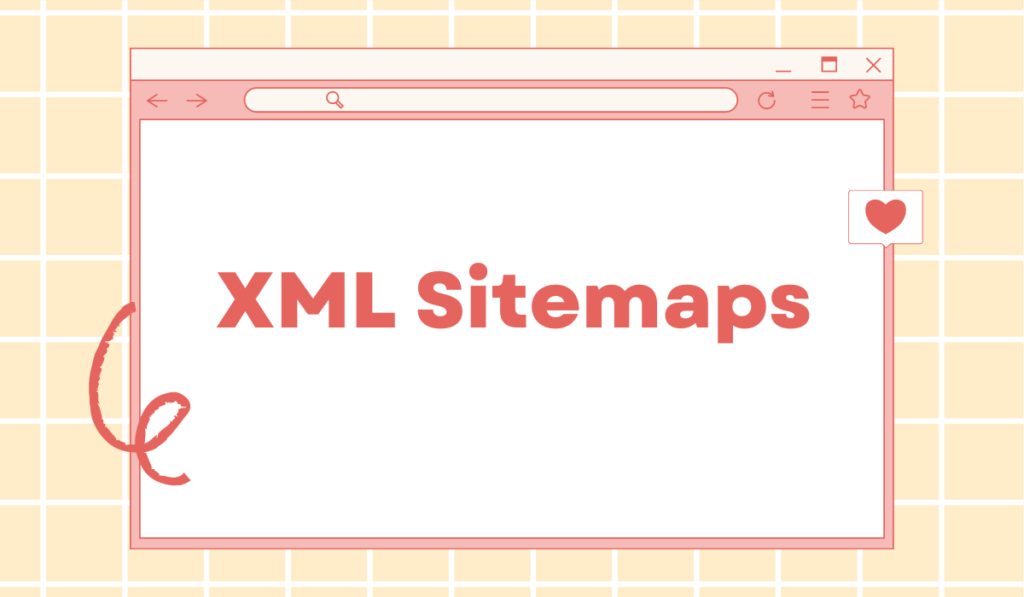An XML sitemap is a file that lists all the pages on your site and their relative importance.XML sitemaps are one of the most important tools for SEO. They assist search engines in crawling and indexing the pages of your website. This is because they provide a roadmap of what is on your site and in what order, so that search engines can more easily find every page you want them to. The XML site map is an important part of search engine optimization. It is a file that lists the URLs of your website, organizing them in an easy-to-read format for search engines. It can also help improve your rankings by telling Google how often each page on your site is updated. Read on to know more about this tool and how you can create one for your website!
What is the XML Sitemap?
An XML sitemap is a file on your website that tells search engines about the structure of your website and which pages are most important.XML stands for “extensible markup language” and it is a way to encode data so that it can be read by computers. They also help you keep track of which pages are getting indexed by search engines, which ones are not, and why that might be the case. An XML sitemap is a specific type of XML file that contains a list of all the pages on your website, along with some additional information about each page (such as when it was last updated).You can think of an XML sitemap as a map of your website that helps search engines find all the important pages on your site. When you create an XML sitemap, you are essentially telling search engines what pages are on your site and how important each page is.
Benefits of XML sitemap
The benefits of having an XML sitemap are:
Ø It helps search engines find all the important pages on your site.
Ø It gives you control over how often each page is crawled by search engines.
Ø It allows you to specify the importance of each page on your site.
Ø It can help you troubleshoot problems with your website’s structure or content.
What are its types?
There are three types of XML sitemaps:
- Standard XML sitemap – This is the most common type of XML sitemap. It contains a list of URLs on your website, as well as additional information about each URL (such as when it was last updated, how often it changes, and its importance).
- Video XML sitemap – A video XML sitemap is similar to a standard XML sitemap, but it also includes information about videos that are hosted on your website. This information can help search engines find and index your videos more effectively.
- Image XML sitemap – An image XML sitemap is similar to a standard XML sitemap, but it also includes information about images that are hosted on your website. This information can help search engines find and index your images more effectively.
How to create a sitemap.xml?
Well, Creating is very easy with the help of sitemap generator tool. If you have a website on your WordPress then you can create it with your SEO plugin.
What are its importance and bandwidth?
Ø The XML Sitemap is a crucial tool for webmasters because it enables them to give search engines a map of their website and content.
Ø An XML sitemap is a file that contains a list of the pages on your site. This list can be submitted to Google and other search engines, which will then use it to index your site more efficiently.
Ø The file can also be used by webmasters to find broken links or missing pages on their site.
Ø The pages on your website are listed in a file called an XML sitemap. Search engines utilize it to better index your website.
Ø A sitemap can be very helpful if you have a large website with many pages, or if your website is new and you want to ensure that all of your pages are indexed by search engines.
Ø If you have a small website, or if all of your pages are already being indexed by search engines, then you probably don’t need an XML sitemap.
Ø The size of an XML sitemap can vary depending on the number of pages on your website. For example, a website with 50 pages would have a much smaller sitemap than a website with 500 pages.
Ø To create an XML sitemap, you can use Google’s Webmaster Tools. You need to login to the service and then select “Crawl” in the left navigation panel. Next, you should choose “Sitemaps”, then click on “Add/Test Sitemap” and finally enter the location of your XML sitemap file.
How many URL are used in the XML sitemap?
An XML sitemap is made up of a list of URLs that you want a search engine to crawl and index. The number of URLs in your sitemap will depend on the size and structure of your website. A small website might only have a few hundred URLs, while a large website could have millions.
Conclusion
The XML sitemap is a crucial tool for website optimization. It helps search engines find and index your pages, making it easier for users to find the information they need. If you’re running a website, be sure to create an XML sitemap and submit it to the major search engines. Doing so will help ensure that your site is properly indexed and that users can easily find the information they need. It is a file that contains a list of all the pages on your website, and it tells Google and other search engines how to crawl your site.





